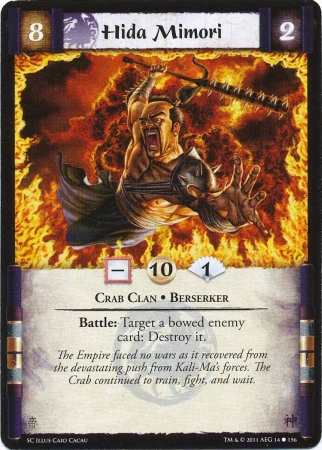The
Berserker
by
Tom Griffith
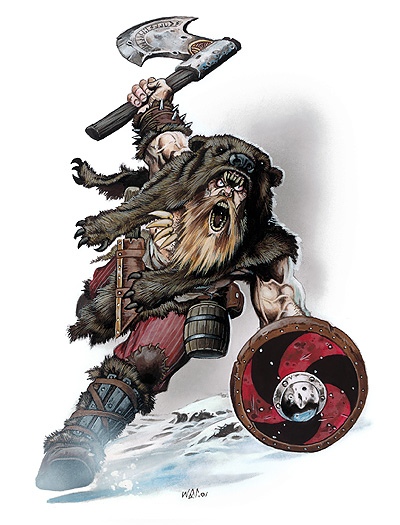
The
Berserker
by
Tom Griffith

| The Norse Berserker | Berserkers as NPCs | Special Abilities | The Beserkergang | Berserker Henchmen |
| - | - | Bibliography | - | - |
| Dragon | Classes | - | Best of Dragon, Vol. II | Dragon 133 |
1. SUBCLASS = n/a
2. SOCIAL CLASS MINIMUM =
3. ABILITY SCORE MINIMUMS
STRENGTH = 15
INTELLIGENCE = 6
WISDOM = 9 (maximum)
DEXTERITY = 6
CONSTITUTION = 15
CHARISMA = 9 (maximum)
COMELINESS = 9 (maximum)
4. POSSIBLE RACES & MAX. LEVEL ATTAINABLE
= human, half-orc
5. MULTI-CLASS POSSIBILITIES = none
6. HIT DIE TYPE = d12
7. MAXIMUM NUMBER OF HIT DICE = 8
8. SPELL ABILITY =
9. ARMOR PERMITTED =
10. SHIELD PERMITTED =
11. WEAPONS PERMITTED = battle axe (two-handed),
hand axe, club,
dagger, hammer, knife, mace, morning
star, scimitar, spear, spiked buckler,
bas-
tard sword, broad sword, falchion, kho-
pesh, long sword, short sword, and
two-handed sword
12. OIL PERMITTED = no
13. POISON PERMITTED = no
14. ALIGNMENT = any chaotic
15. STARTING MONEY =
16. WEAPON PROFICIENCIES =
17. NON-PROFICIENCY PENALTY =
18. NON-WEAPON PROFICIENCIES =
19. STARTING AGE =
20. COMBAT =
21. SAVING THROWS =
22. MAGIC ITEMS =
400,000 XP per level are required for each additional level above 12th. Berserskers gain 4 hp per level after 12th.
The
Wild Warriors
The
ultimate hack-n-slashers: berserker NPCs
by Tom Griffith
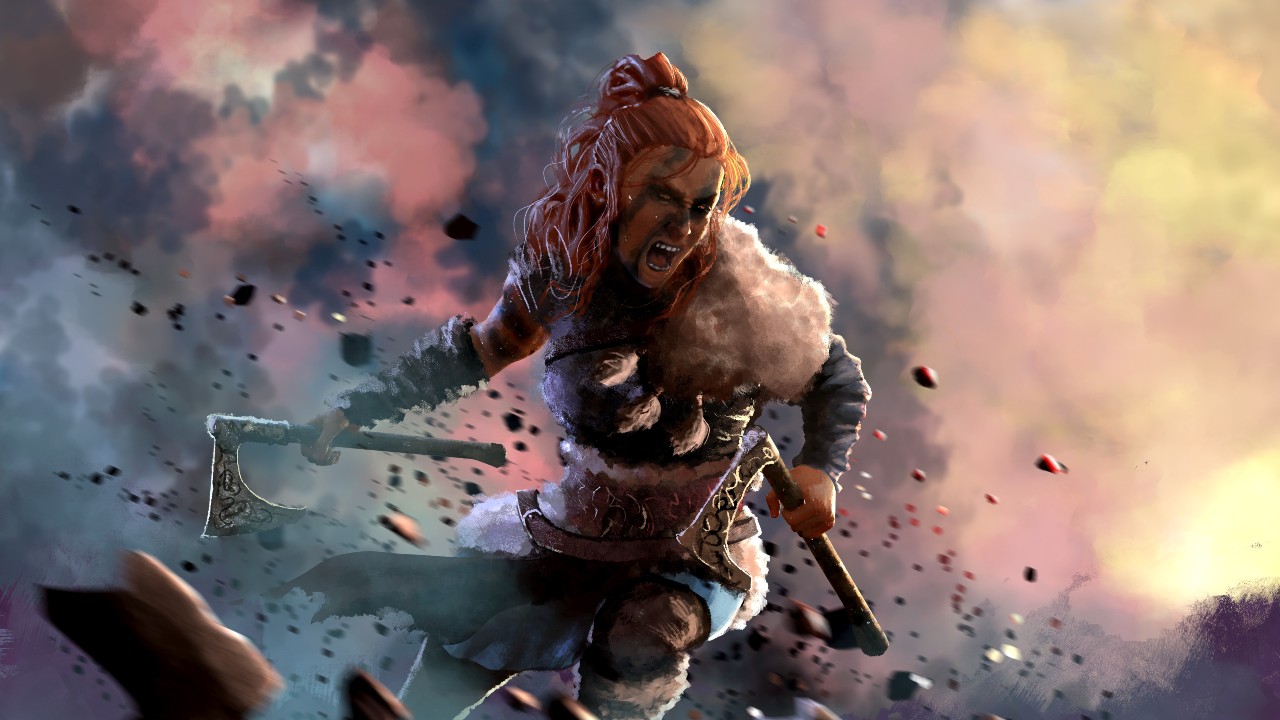
The berserker was a prominent figure in
Scandinavian culture in the Middle Ages.
In DRAGON® issue #3, a short
article was
written to place this figure into the
DUNGEONS & DRAGONS® game
as an
NPC. That article, while containing many
worthwhile ideas, approached the ber-
serker from the idea that the name came
from the idea of “bear sarking,” a state
of
madness induced from wearing shirts
made of bear fur. (This state was similar
to
lycanthropy.) This article attempts to
include these fascinating people in AD&D®
games as NPCs from a more historical
perspective. Their use as player characters
is limited because berserkers would not
adapt well to cooperative adventuring,
and
their chances of survival may be low
despite their extraordinary combat skills.
The Norse berserker
The berserker was a fascinating figure
in Norse history up through medieval
times. The name “berserker” was derived
from a hero in Scandinavian mythology.
Berserker, the grandson of the great eight-
handed Starkadder and the beautiful
Alfhilde, was known for his fierce battle
madness and his habit of charging into
battle with no armor but a shield. It
was
this habit of fighting in his bare sark,
or
tunic, that earned him the name Berserker
(Baresarker). He had 12 sons by the daugh-
ter of King Swafurlam (whom he had slain
in battle); all of his offspring inherited
his
temperament as well as the name Ber-
serker. From these warriors came the
wild, Odin-worshiping
berserkers of histo-
ry and lejend.
In appearance and attitude, the ber-
serkers were a menacing group of people.
Typically, they were huge
and strong but
quite ugly. Considering cleanliness unman-
<low Comeliness> <appearance: dirty>
ly, they were proud of their unwashed
and
unkempt state. Surly and bullying, they
<>
were thought by many to be victims of
mental imbalance. Their tendency to
assault and murder at will kept most peo-
ple terrified of these “beast-men.” Even
the <compare: beast-men, in GHA>
bravest warrior would give way, if his
pride and status would allow it.
Many Norwegian kings were fond of
having a few berserkers among their
followers as bodyguards and shock troops,
<bodyguard=sentinel>
and at times the kings gave berserkers
to
one another as gifts. As is frequently
men-
tioned in Icelandic sagas, berserkers
decid-
ed the outcome of many a battle.
The characteristic that set these people
apart from the other warriors of their
time was their famous berserker fury,
the
berserkergang. This state was induced
by
the berserker when he worked himself
into a terrible frenzy by biting the rim
of
his shield (much as a dog
worries a stick
or rag), stomping his feet, and growling
like a bear.
A medieval chess piece found
in the Hebrides
(a common site of Viking
raids) depicts such a warrior biting the
edge of his shield. Once in this self-
induced state, the berserker’s eyes seemed
to blaze with unnatural light, his body
trembled, and his mouth worked up a
terrible frothing. His face
became swollen
and purple. Once the berserkergang was
upon him, he would rush forward, howl-
ing and making other animal noises. <animal
noise skill?>
While under the berserkergang, the
berserker was reputed to gain superhu-
man strength and immunity to fire
and
pain, ignoring all but the deadliest
wounds. The mere appearance of a ber-
serker in this state would often drive
his
enemies away in terror. Personal safety
was all but forgotten in the rage to kill;
the
berserkers would not stop until all ene-
mies were dead or driven away. The
orders of their leaders were either
unheard or ignored. In this battle-
madness, friends were sometimes forgot-
ten or even mistaken as enemies. The
price paid after the battle was that the
berserker would be exhausted and help-
less until well rested.
Berserkers as NPCs
In AD&D game terms, the berserker
is a
subclass of fighter based on the Viking
berserkers of the Middle Ages. This sub-
class, which is related to the barbarian
subclass and is unable to wear heavy
armor or cast spells, has special abilities
that compensate for its restrictions.
The
berserker is adept at direct combat to
the
extent of suffering in defensive and plan-
ning capabilities, and shares few of the
barbarian’s talents for survival. It is
not
unusual to find berserkers living among
barbarian communities or (more rarely)
among humanoid tribes, and they are
occasionally seen in large groups, roving
the countryside in search of battle. They
are very rarely encountered elsewhere.
The berserker must have strength and
constitution scores of no less than 15
each.
His wisdom, charisma, and comeliness
scores cannot be greater than 9. Ber-
serkers receive no bonuses on earned
experience, as they have no principal
attributes. They cannot have more than
one class. Table 1 has information on
level
progression for berserkers.
Humans
and half-orcs are the only races
which may become berserkers, and they
are limited in level advancement only
as
per the fighter class in this respect.
All
berserkers must be of chaotic alignment,
whether good, neutral, or evil. Like bar-
barians, berserkers speak only their tribal
tongues and the common language of the
area in which they live. Berserkers refuse
to learn other languages, and disdain
the
arts of reading and writing.
Like barbarians, berserkers use 12-sided
hit dice, have a base movement rate of
15”, and use the combat and saving-throw
tables of fighters. They have the same
ability to attack creatures struck only
by
magical weapons, much as barbarians are
able to do. From 1st to 5th level, ber-
serkers attack once per round; from 6th
to
10th level, they attack three times every
two rounds; at 11th level and above, they
attack twice per round. Berserkers have
the same saving-throw bonuses that bar-
barians have (i.e., + 4 vs. poison; +3
vs.
paralyzation, death magic, petrification,
and polymorph; +2 vs. wands, rods,
staves, and breath weapons; and, +1 per
four levels attained vs. spells). They
are
additionally immune to magical fear, such
as cause fear, scare, fear, etc.
Berserkers refuse to wear any armor
other than nonbulky furs or leather, and
they use the normal defensive adjustments
for high dexterity as opposed to the adjust-
ments used by barbarians. Shield use is
permitted. Berserkers absolutely hate
magic other than that practiced and used
by the clerics of their tribe, and they
refuse to utilize magical items of any
sort
— particularly magical armor, shields,
weapons, and protective devices. Ber-
serkers have no use for rings, bracers,
and
similar “fine” decorations, and they avoid
using well-kept weapons, selecting ones
which appear to be “obviously” nonmagi-
cal. For protection in battle, berserkers
depend on their gods and their personal
prowess, and this strength of will affects
their armor class.
A 1st-level berserker has a natural
armor class of 10, but his armor class
drops one point for each level gained
thereafter. This armor class may be low-
ered by using a shield and by dexterity
bonuses. Leather armor becomes useless
at 3rd level and after, when the berserker
gains AC 8 or better.
The arms usable by a berserker are:
battle axe (two-handed), hand axe, club,
dagger, hammer, knife, mace, morning
star, scimitar, spear, spiked buckler,
bas-
tard sword, broad sword, falchion, kho-
pesh, long sword, short sword, and
two-handed sword. The battle axe and <*>
two-handed sword are used without a
shield because they require two hands.
A
berserker will never use any sort of mis-
sile or thrown weapon, these being too
cowardly to consider; they never use
poison or flaming oil for the same reason.
Berserkers initially learn six weapons
of
proficiency, have a -1 nonproficiency
penalty, and may learn a new weapon at
every odd-numbered level (3rd, 5th, etc.).
They are unable to gain specialization
with
any weapon, as this requires a level of
skill
and finesse that berserkers cannot grasp.
Berserkers, unlike barbarians, have no
required weapons.
Berserkers have some of the abilities of
barbarians, as outlined in Unearthed Arca-
na, pages 19-21. They are able to use
the
following primary skills:
climb
cliffs and trees,
back protection,
leaping
and springing, and detect
magic (the
sometimes being sufficient to trigger
the
latter ability berserkergang in tense
situations). No
other primary skills are used, and ber-
serkers have none of the barbarian’s sec-
ondary or tertiary skills, as they care
only
for battle. Berserkers are often supported
by their tribe to keep them in shape (and
pacify them) when no battles are being
fought. Though they cannot summon
hordes as barbarians can, they gladly
respond to such a summons.
Special abilities
As the berserker rises in levels, he gains
special abilities. These are:
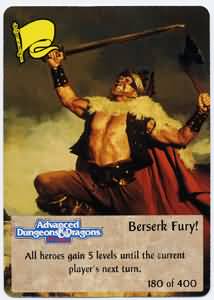
1. At 1st level, the berserker can go
berserk (as described herein). He also
has
a +2 bonus to save against fire-based
attacks of any sort (in addition to any
other bonuses) and takes one-half damage
from normal fires.
Additionally, the berserker has a 5%
chance per level to detect hidden and
invisible beings within a 30’ radius around
him. Berserkers usually attack such beings
at once. Nonliving objects which are hid-
den or invisible cannot be so detected.
2. At 3rd level, the berserker’s chance
of
being surprised is reduced to 1 on 1d6.
3. At 4th level, berserkers can attack
creatures struck only by +1 or better
magical weapons.
4. At 5th level, the berserker is able
to
continue fighting while berserk (as
described in the following section) until
he
reaches-10 hp, at which point he dies
immediately. If his berserk state ends
while he is at negative hit points, he
col-
lapses and loses 1 hp per round until
he
dies at-10 hp, unless he is given aid.
5. At 6th level, berserkers can attack
creatures struck only by +2 or better
magical weapons.
6. At 7th level, the berserker becomes
immune to nonmagical fire. His saving
throw against magical fire-based attacks
gains a +4 bonus.
7. At 8th level, berserkers can attack
creatures struck only by +3 or better
magical weapons.
8. At 9th level, the berserker gains 2-12
special henchmen, as determined by the
DM from the table in this article. A ber-
serker can never employ hirelings, as
no
one will follow such a person willingly,
even for large sums of money. Berserkers,
however, are often hired as mercenaries
or bodyguards.
9. At 10th level, berserkers can attack
creatures struck only by +4 or better
magical weapons.
10. At 12th level, berserkers can attack
creatures struck only by +5 or better
magical weapons.
Table 2
Berserkergang Bonuses and Penalties
| Condition | Bonus/penalty |
| For gnawing on shield or weapon | +20% |
| For being cornered | +20% |
| For each melee round after the first | +10% |
| For each friend or follower killed | +10% |
| If the berserker is alone | +10% |
| For each level of experience | +1 % |
| For each hit point lost | +1 % |
| For each previous berserk that day | -10% |
Going berserk is not an automatic ability
for berserkers. A base 10% chance (modi-
fied as per Table 2) exists that a berserker
NPC goes berserk when the DM deems the
conditions are suitable for the arousal
of
battle-lust. Typical causes for this are:
a
direct threat to the personal safety of
the
berserker or his henchman, patron, or
companion; a feeling of extreme helpless-
ness; or a sensation of being strongly
ridiculed. Additionally, any magical situa-
tion or effect meant to produce fear auto-
matically calls for a die roll to see
if the
berserker enters the berserkergang. It
takes only one melee round to go berserk,
during which time the berserker calls
upon his inner rage, bites on his shield,
and so on. If a berserker lacks a shield,
he
may bite other objects, such as his weap-
ons. If the berserkergang is not summon-
ed, the berserker fights as a normal
fighter. A surprised berserker has no
time
to summon his battle fury, though he may
willingly step back (risking a free attack
from opponents for that round) and
attempt to call upon the berserkergang.
Though a berserker is not obligated to
call upon the berserkergang in every fight
in which he is involved, he will have
a
strong tendency to do so. Numerous
advantages and disadvantages come with
the berserkergang. The advantages
include:
1. The berserker gains a +2 “to hit”
bonus on all hand-to-hand combat attacks.
2. The berserker is immune to psionic
attacks and to all forms of charm, fear,
and similar will-force attacks.
These magical attack forms are listed
in the wisdom table on page 7 of Legends
& Lore.
3. The berserker gains a +2 bonus to
initiative rolls.
4. Subtract 1 hp from all damage a ber-
serker takes from each single attack made
against him. This represents the ber-
serker’s ability to ignore his wounds
and
continue fighting.
5. Due to the horrible aspect of this
ability and the berserker’s appearance
while berserk, all opponents of zero level
and those having less than one hit die
must immediately check morale when
viewing an enraged berserker, or else
flee.
6. The berserker feels no pain or
exhaustion while berserk, becoming
immune to spells such as symbol of pain.
The berserkergang includes these disad-
vantages as well:
1. The berserker cannot withdraw from
melee or parry blows while berserk, and
he remains berserk for as many rounds
as
he has constitution points — even if the
opponents are slain, at which point the
berserker attacks the nearest living being
on a 10% chance. Otherwise, he continues
to attack fallen enemies until the rage
passes.
2. The berserker is immediately exhaustion
(as per rules in the Dungeoneers Survival Guide, pages 21-22) after
going
berserk, and cannot go berserk again until
completely recovered. He thus suffers
a
-4 penalty to all attributes, saving
throws, and combat abilities (“to hit”
and
damage rolls); his movement is reduced
to
11", slightly slower than a normal
walking
man. Recovery can only be made after an
hour of complete rest and a successful
constitution check; this reduces the penal-
ty to -2 until another two hours of com-
plete rest and another constitution check
bring the berserker to full power. Consti-
tution checks are made using the modified
constitution scores for the NPC.
3. Because of the noise they make
and
their mental condition during the ber-
serkergang, berserkers cannot hear any
orders, suggestions, or warnings from
their companions while in this state.
Berserker henchmen
Use Tables 3-8, along with the ranger
followers tables (see the DMG,
pages
16-17) to determine a ber-
serker’s special henchmen. Use Table 3
to
substitute for the ranger followers table
at
the top of the first column of page 17
of
the DMG. Roll only once on Tables 6-8.
Table 3
Berserker Followers Table
| Dice score | Result |
| 01-60 | See Table 4 |
| 61-80 | See Table 5 |
| 81-90 | See Table 6 |
| 91-95 | See Table 7 |
| 96-00 | See Table 8 |
Table 4
B e r s e r k e r ' s H u m a n H e n c
h m e n
| D i c e score | Character | Level range |
| 01-05 | Bard* | 1-3 |
| 06-30 | Barbarian | 1-3 |
| 31-55 | Berserker | 2-5 |
| 56-69 | Cleric/shaman** | 1-4 |
| 70-00 | Fighter | 1-6 |
* If bards are not used in a campaign,
then a cleric or shaman is received.
* * Humanoid shamans are received
only if the berserker is a half-orc
Table 5
Berserker's Demi-human Henchmen
| Dice score | Character class and race | Level range | Number |
| 01-15 | Dwarven fighter/thief | 1-4 | 2 |
| 16-31 | Dwarven fighter | 1-4 | 2 |
| 32-37 | Dwarven fighter/cleric | 1 | 1 |
| 38-42 | Gnome fighter/thief | 1 | 1 |
| 43-47 | Half-elven bard* | 1-3 | 1 |
| 48-52 | Half-elven fighter/cleric | 1 | 1 |
| 53-58 | Half-elven fighter/thief | 1 | 1 |
| 59-63 | Half-elven fighter | 1 | 1 |
| 64-79 | Half-orc berserker | 1-4 | 2 |
| 80-84 | Half-orc fighter/cleric | 1 | 1 |
| 85-95 | Half-orc fighter | 1-4 | 2 |
| 96-00 | Half-orc fighter/thief | 1 | 1 |
* If bards are not used in a campaign, then a cleric or shaman is received.
Table 6
Berserker Mounts
| Dice score | Mount | Number |
| 0 1 - 3 5 | C e n t a u r | 1-3 |
| 36-71 | Hippogriff | 1 |
| 72-87 | Griffon | 1 |
| 88-00 | Pegasus/wyvern/dragonnel* | 1 |
* Applies to WORLD OF GREYHAWK®
fantasy setting only; also depends on
the berserker's alignment
Table 7
Berserker's Minor Creature Allies
Berserker's alignment
| Dice Score | Chaotic good | Chaotic neutral | Chaotic evil |
| 01-50 | War dog | Wolf | Huge ravens (2) |
| 51-75 | Black bear | Gorilla bear | Worg |
| 76-80 | Giant owl | Giant otter | Ogre |
| 81-90 | Pseudo-dragon | Al-mi'raj | Galltrit |
| 91-00 | Faerie dragon | Firedrake | Ice lizard |
Table 8
Berserker's Major Creature Allies
Berserker's alignment
| Dice score | Chaotic good | Chaotic neutral | Chaotic evil |
| 01-05 | Brass dragon* | Shen lung* | White dragon* |
| 06-10 | Storm giant | Mountain giant | Ettin |
| 11-30 | Werebear | Wereboar | Werewolf |
| 31-75 | Moon dog | Verbeeg | Hill giant |
| 76-00 | Weretiger | Korred | Giant troll |
* Roll 1d4 +1 to determine the age category of the dragon. It will,
of course, possess
no treasure.
Bibliography
American Council and Learned Societies.
Dictionary of the Middle Ages, Volume
2.
Ed. by Joseph R. Strayer. New York:
Charles Scribner’s Sons, 1983.
Anderson, Poul. The Broken Sword.
New York: Ballantine Books, 1981.
Anderson, Poul. Hrolf Kraki’s Saga.
New
York: Ballantine Books, 1973.
New Encyclopedia Brittanica. 15th ed.,
s.v. “Berserker."
Njals Saga. Trans. by Magnus Magnusson
and Hermann Palsson. New York: Penguin
Books, Inc., 1960.
Pickens, Jon. “Berserker." DRAGON
issue
#3, October, 1976, p. 27 (reprinted in
the
Best of DRAGON Magazine Anthology,
vol. 2).
ROGUES' GALLERY: BERSERKERS
zb
20. Callvyn (half-elf berserker 14; 92.300)
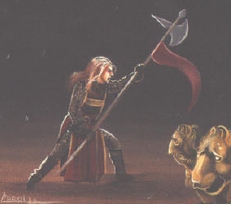
19. Istha Rockhead (berserker 5; 92.297)
18.
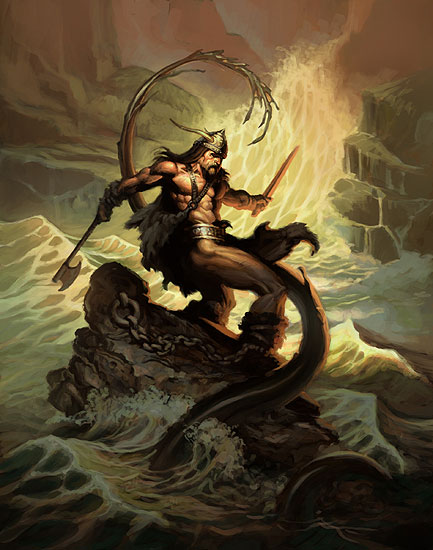
17.
16.
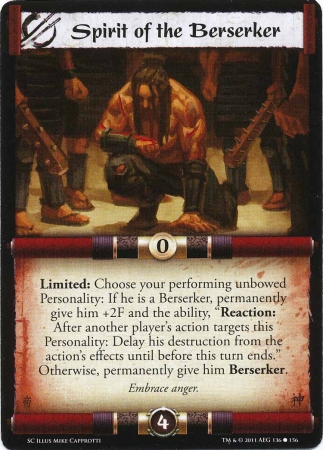
15.
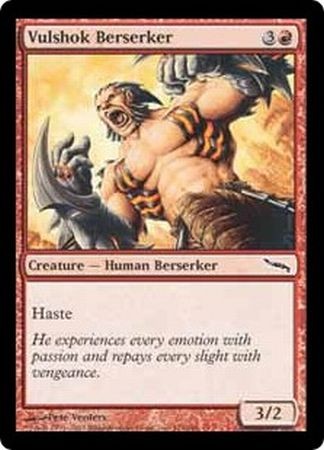
14.
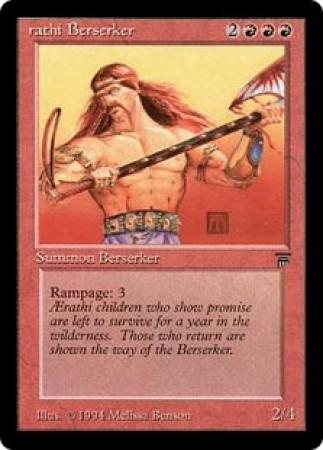
13.
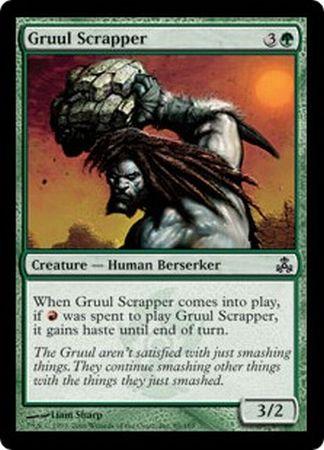
12.
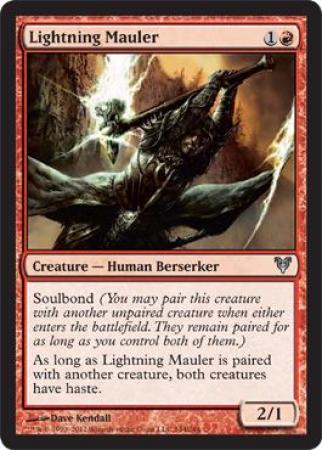
11.
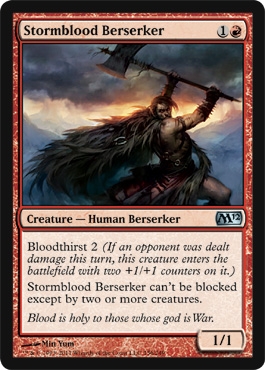
<rename file # to 11>
10.
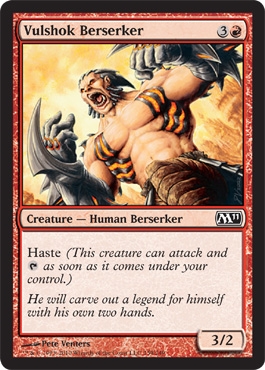
9.
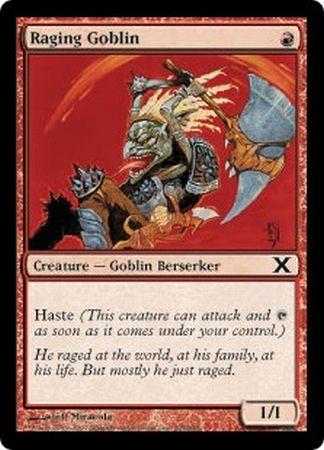
8.
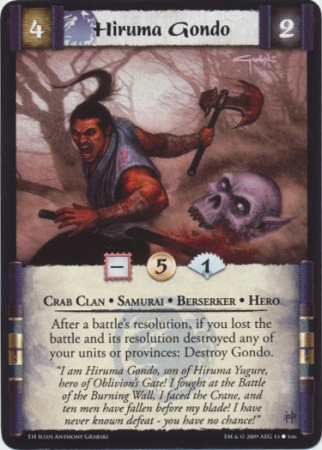
7.
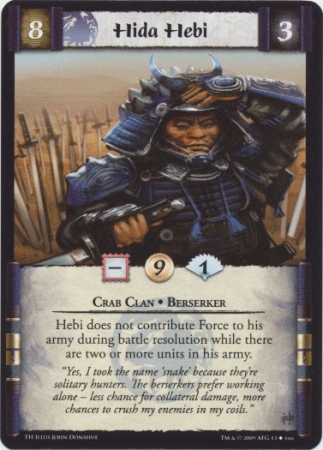
6.
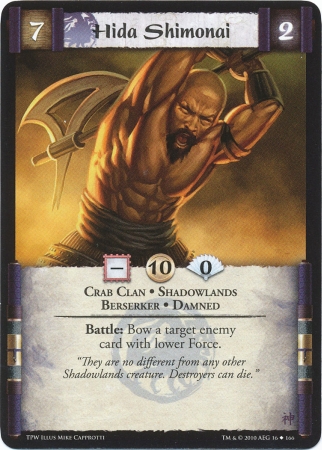
5.
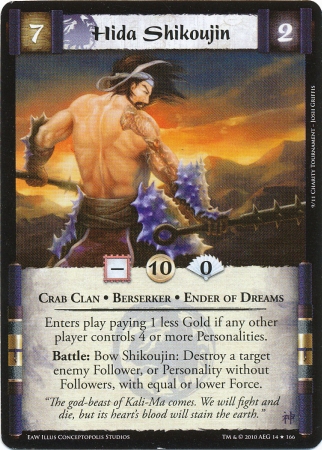
4.
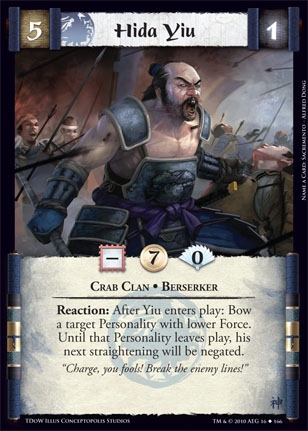
3.
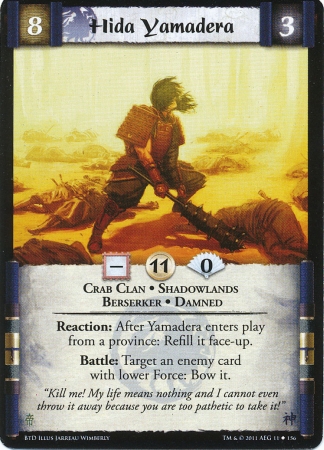
2.
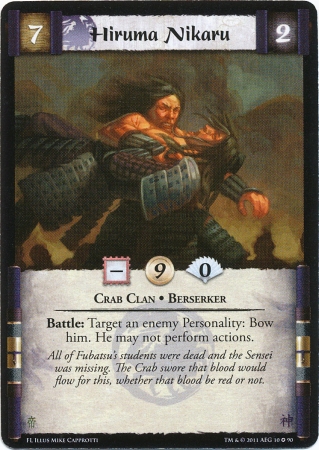
1.
